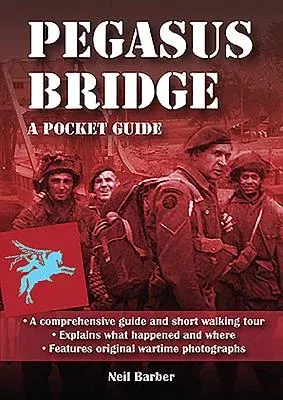Pegasus Bridge is a legendary part of the D-Day story but myths and
misunderstandings abound.
The 6th Airborne Division was to begin landing in this area during the
early hours of D-Day with a mission to protect the eastern flank of the
seaborne landings, commencing a few hours later. For the British and
Canadians, this was just beyond Ouistreham, on the beaches codenamed
SWORD, JUNO and GOLD.
The very first operation of D-Day was to be the capture of the Caen
Canal Bridge (Pegasus Bridge) and the River Orne Bridge (Horsa Bridge) a
little further up the road. These were the only two bridges between the
sea and Caen and so were vital for the linking of the seaborne and
airborne forces and also the resupply of the Airborne Division and
evacuation of its wounded.
For the Germans, possession of the bridges was equally vital, as it
would provide them with the opportunity to attack the seaborne forces in
their most vulnerable area; the flank
This comprehensive pocket guide is designed for anyone visiting the site
but is equally useful for anyone wanting an accurate understanding of
exactly what went on and where.
Neil Barber has written a number of comprehensive guides to the Normandy
Campaign including an in-depth look at Pegasus Bridge. Here he uses
photographs and firsthand accounts to simply explain what happened in
those first few vital hours of D-Day.

